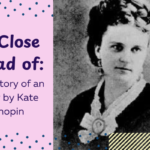 A teaching moment that I will never forget is back in 2008 teaching United States History to fifth graders. We were on our second day of Roanoke. The kids were highly engaged and we were deep in discussion for two full days. By the end of the second day we were beginning to think about our reflective writing. Did they leave the area and set up somewhere else? Were they killed by the native people? What happened to the people of Roanoke. Then a hand went up, which was odd since we were all discussing our thoughts together. I smiled and called on the young man in the back of the room. He shook his head and said, “Mrs. Rogers, if they were stuck out there and scared, why didn’t they just call someone?” I know that my jaw dropped as all 22 sets of eyes turned to look at their teacher, searching for an answer. They were not amused by this question, they were curious as well! My mind raced. Was he serious? Did he think that the Colonial people were running around with smart phones? Had they had Google maps, they could have mapped their way out. While, I’m not going to lie, I was frustrated and sad and I’m sure it showed. I was energized by our conversation the past two days, my whole class was involved, I thought we were deep in learning, just to find out that I had 22 very confused students! I just smiled, knowing no good was going to come from a quick conversation right that moment, I needed time. I asked all the fifth graders to go home that night and think about that question. What did they think? I planned to do the same.
A teaching moment that I will never forget is back in 2008 teaching United States History to fifth graders. We were on our second day of Roanoke. The kids were highly engaged and we were deep in discussion for two full days. By the end of the second day we were beginning to think about our reflective writing. Did they leave the area and set up somewhere else? Were they killed by the native people? What happened to the people of Roanoke. Then a hand went up, which was odd since we were all discussing our thoughts together. I smiled and called on the young man in the back of the room. He shook his head and said, “Mrs. Rogers, if they were stuck out there and scared, why didn’t they just call someone?” I know that my jaw dropped as all 22 sets of eyes turned to look at their teacher, searching for an answer. They were not amused by this question, they were curious as well! My mind raced. Was he serious? Did he think that the Colonial people were running around with smart phones? Had they had Google maps, they could have mapped their way out. While, I’m not going to lie, I was frustrated and sad and I’m sure it showed. I was energized by our conversation the past two days, my whole class was involved, I thought we were deep in learning, just to find out that I had 22 very confused students! I just smiled, knowing no good was going to come from a quick conversation right that moment, I needed time. I asked all the fifth graders to go home that night and think about that question. What did they think? I planned to do the same.
That night, after the frustration wore off, I realized it was my fault. These digital natives didn’t know any better. Their worlds have always been filled with high-tech technology that could help them out in most situations. I had to set up the time period for them. To begin with, we would study pictures of the time period. I would have students discuss what they saw, ask questions, and make inferences. I would also bring in maps that could be studied and discussed. I needed to paint a clearer picture for my students. After these adjustments were made, it was amazing to see the new thinking the students did in reference to the rest of our learning on the colonies.
This memory leads me to a great discovery I made two years ago. The discovery … www.historypin.com! This free website has photographs from 1840 to the current day “pinned” on a map to display the location in which it was taken. I LOVE this! My students love the site as well. It is so easy to maneuver and 100% addicting! The site allows you to have multiple search options; you can search by time period, by location, or by subject. I always go to this site as I am reading novels, with or without my students. We search the time period and location of the book to see if we can find photographs. For example, I am currently reading One Came Home by Amy Timberlake. The story takes place in 1870s Wisconsin. The setting and time period is beautifully written and described, but in order to not have another “oops” moment teaching, it would be beneficial to have to students study pictures from the time and place prior to reading the book.
From now on, every time I begin a new novel or a new social studies unit, I provide visuals for the students before we begin. The visuals are visible throughout the learning and referenced often.


